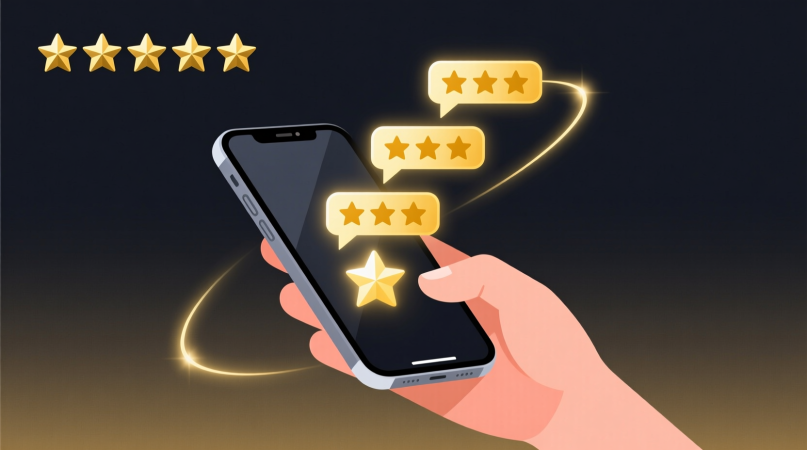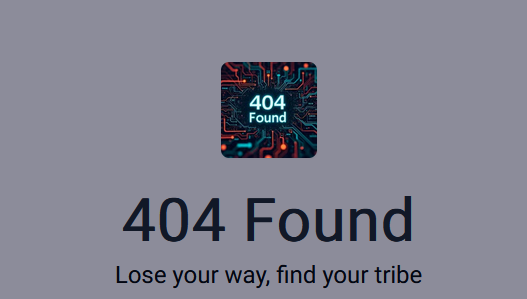How to Get Client Testimonials Fast (Without Begging or Awkward Follow-Ups)
Your clients love your work. They tell you all the time. But when you actually ask for a testimonial? Radio silence.
It’s the most frustrating pattern in business: deliver amazing results, get zero testimonials to show for it. You send polite requests. You wait. You follow up. You wait some more. Eventually you give up and accept that you’ll just have to keep explaining your value to every new prospect from scratch.
Here’s what nobody tells you: The problem isn’t your clients. It’s your approach.
You’re asking at the wrong time, in the wrong way, making it too hard for them to say yes. And it’s costing you thousands in lost conversions, because prospects trust other customers 10x more than they trust your marketing claims.
TL;DR
- 90% of testimonial requests fail because of timing and cognitive overload
- There’s a 48-hour “golden window” after satisfaction peaks when response rates are 10x higher
- Generic requests like “can you write a testimonial?” create decision paralysis
- A strategic 3-question framework eliminates writer’s block and produces conversion-focused testimonials
- Most creators display testimonials wrong—placing them where prospects never see them
Why Your Testimonials Suck (And Why It Matters)
Let’s be brutally honest about testimonials on most websites:
Weak testimonial: “Great to work with! Very professional. Highly recommend.”
This does absolutely nothing. It’s wallpaper. Prospects scroll right past it because it could apply to literally anyone in your industry.
Strong testimonial: “Before Sarah, we burned $8K/month on ads that brought inconsistent leads—20 one month, 5 the next. She built us an organic system generating 35 qualified leads monthly like clockwork. Within 60 days we cut ad spend 60% and our pipeline is fuller than ever. If you’re tired of unpredictable ad performance, talk to Sarah.”
This testimonial converts because it tells a story prospects recognize: specific problem, specific solution, specific results, clear next step.
The difference between these two examples? The second one uses a proven framework. And that framework is exactly what most creators are missing.
The #1 Reason You Don’t Have Testimonials
It’s not that clients don’t appreciate you.
It’s that you’re making testimonial-giving hard.
Think about it from their perspective. You send: “Hey, would you mind writing me a testimonial?”
Their brain immediately hits decision fatigue:
- What should I write about?
- How long should it be?
- What if I say the wrong thing?
- What if it’s not good enough?
- I’ll do this later when I have time to think…
“Later” never comes. Your request gets buried under 147 other emails.
The solution? Remove every single decision point. Make saying yes easier than saying no.
The Science of Getting Testimonials: Timing Is Everything
Research in behavioral psychology shows there’s a critical window when clients are most likely to give testimonials, and most creators completely miss it.
The Peak Satisfaction Window (24-72 Hours)
This is the period immediately after:
- They achieve a major win you helped them reach
- They send you an excited message about results
- They refer someone to you
- You deliver unexpected value beyond what they paid for
Why this window matters: The emotional high of solving their problem is still active. They’re experiencing gratitude. The transformation is vivid in their mind.
Wait a week? The dopamine fades. Your help becomes “background noise.” The request feels like a favor instead of an obvious yes.
Where Most Creators Fail
Common timing mistakes:
- Asking weeks after project completion (emotion gone)
- Asking during difficult moments (frustration present)
- Asking before results are visible (nothing to talk about)
- Asking everyone at once (sounds automated and impersonal)
The fix: Keep a trigger list. Track when each client hits a peak satisfaction moment, then ask within 48 hours.
The Question Framework That Changes Everything
Here’s what separates testimonials that convert from generic fluff that gets ignored:
Bad testimonials answer: “Was the service good?”
Great testimonials answer:
- What was the specific problem before?
- What measurable result happened after?
- Who else has this exact problem?
These three questions transform vague praise into stories that prospects see themselves in.
Example transformation:
Before (generic): “Working with them was great. Very knowledgeable. Would recommend.”
After (specific): “We were spending 15+ hours weekly chasing testimonials from clients with zero response. Using this system, we collected 12 high-quality testimonials in 4 days. If you’re a freelancer struggling to get client feedback, this is the solution.”
Notice what changed? The second version speaks directly to someone with that exact problem. They think: “That’s literally me right now.”
This is why the framework matters. It guides clients to give you testimonials that actually convert prospects.
Why Asking “Can You Write a Testimonial?” Fails
When you send a blank request, you’re asking your client to:
- Figure out what you want
- Decide what’s important to mention
- Find the right words
- Overcome perfectionism
- Carve out 20-30 minutes they don’t have
Each of these is a friction point. Each friction point increases the chance they’ll procrastinate indefinitely.
What works instead: Give them structure. Ask specific questions. Or offer to draft something they can approve in 2 minutes.
The less creative thinking required, the faster you get responses.
The Critical Mistake Costing You Conversions
You finally get testimonials. Great! Now where do you put them?
Where most creators hide testimonials:
- Bottom of the homepage (below the fold)
- Separate “testimonials” page nobody visits
- Buried in the footer
- All lumped together without context
Where testimonials actually convert:
- Homepage hero section (above the fold)
- Product pages addressing specific objections
- Checkout page (final push before purchase)
- Email sequences at decision points
- Landing pages where skepticism is highest
Pro tip: Match testimonials to objections. If prospects worry about price, show a testimonial about ROI. If they worry about complexity, show a testimonial about ease of use.
Strategic placement turns testimonials from decoration into sales tools.
What the System Actually Includes
Look, you could figure all this out yourself through trial and error over the next 6 months.
Or you could use the exact templates, scripts, and framework that’s already proven to work.
The 5-Minute Testimonial Collection System gives you:
- ✅ Word-for-word email templates you can copy-paste
- ✅ The exact 3-question framework with fill-in-the-blank structure
- ✅ Perfect timing guide (when to ask, when not to ask)
- ✅ Follow-up sequences that don’t feel pushy
- ✅ Testimonial upgrade scripts (for when clients send generic responses)
- ✅ Strategic placement guide for maximum conversions
- ✅ 7-day action plan to collect 3+ testimonials this week
Watch the system in action:
This isn’t theory. These are the exact scripts and strategies that consistently get 70-80% response rates compared to the industry average of 5-10%.
Who This Is For
You need this system if:
- You’ve delivered great results but have zero testimonials to show for it
- Your testimonial requests get ignored or forgotten
- You have generic testimonials that don’t actually convert prospects
- You feel awkward or pushy asking for testimonials
- You’re tired of explaining your value to every single prospect from scratch
- You’re launching a new product/service and need social proof fast
- You’re a freelancer, consultant, coach, or digital product creator
You don’t need this if:
- You already have 20+ specific, conversion-focused testimonials
- Your clients proactively send you detailed testimonials without being asked
- You have a team handling testimonial collection for you
- You’re comfortable with 5-10% response rates on testimonial requests
The Real Cost of Not Having Testimonials
Think about your last 5 prospects who didn’t buy.
How many asked questions like:
- “Do you have any case studies?”
- “Can I see examples of results?”
- “Who else have you worked with?”
- “How do I know this will work for me?”
Every one of those questions is them asking for social proof. Without strong testimonials, you’re trying to convince them with just your word.
Prospects trust other customers 10x more than they trust your marketing.
If you’re not showcasing specific results from real clients, you’re fighting an uphill battle in every sales conversation.
Quick math: If you’re converting 20% of prospects now, strong testimonials could push that to 27% (a conservative 34% increase). That’s an extra 7 clients per 100 leads. If your average client is worth $2,000, that’s $14,000 in additional revenue per 100 leads.
Now multiply that by however many leads you get per year.
Still think testimonials don’t matter?
Why This System Works When Others Don’t
Most “testimonial advice” tells you to “just ask your happy clients.”
Cool. Super helpful. 🙄
This system is different because:
1. It’s based on behavioral psychology Understanding cognitive load, peak satisfaction windows, and reciprocity triggers means you’re working with human nature instead of against it.
2. It removes every decision point Clients don’t need to figure out what to write or how to say it. The framework guides them to specificity automatically.
3. It’s optimized for conversion, not just collection You don’t just get testimonials—you get testimonials that address objections and help prospects self-identify.
4. It includes damage control What do you do when someone sends a generic testimonial? The system includes exact scripts to upgrade weak responses without being awkward.
5. It’s immediately actionable No theory. No fluff. Just copy-paste templates and step-by-step instructions you can use today.
Common Questions
How long does it actually take?
The system itself is designed around 5-minute interactions. Initial request: 5 minutes. Client response time: 2-5 minutes to review/approve. Most people collect 3-5 high-quality testimonials within the first week.
What if my clients are too busy?
That’s exactly why the system works, it’s designed for busy people. By offering to draft testimonials or providing a simple 3-question framework, you’re making it easier for them to say yes than to ignore you.
Will this work for digital products or just services?
Both. The timing and approach adjust slightly (for products, you ask 3-5 days after purchase once they’ve used it), but the framework is the same.
What if I’ve already asked and been ignored?
The system includes “second chance” scripts for re-approaching clients who didn’t respond to previous requests. Different approach, different timing = different results.
Do I need to give anything in return?
Not required, but offering a small bonus (discount on next purchase, free resource, or shoutout) can increase response rates by 50-100%.
Can I see examples before buying?
The YouTube video above talks about the system more, you will also find the link to the article that dives deeper into it from the Youtube video descrption. The download gives you the full copy-paste templates and step-by-step process.
Is this just email templates?
No. It’s a complete system covering timing strategy, psychological triggers, the 3-question framework, placement optimization, follow-up sequences, and how to handle weak testimonials. Templates are included, but they’re part of a larger strategic approach.
What format is it?
Downloadable PDF (10 pages). Instant access after purchase. No shipping, no waiting.
Stop Losing Sales to “Lack of Social Proof”
Get the complete system with templates, scripts, and framework:
Download for $9 (Instant Access) →
Price: $9 | Format: PDF | Pages: 10 | Access: Instant download
Includes: Email templates, 3-question framework, timing guide, follow-up sequences, placement strategies, 7-day action plan
Want more faceless business systems?

